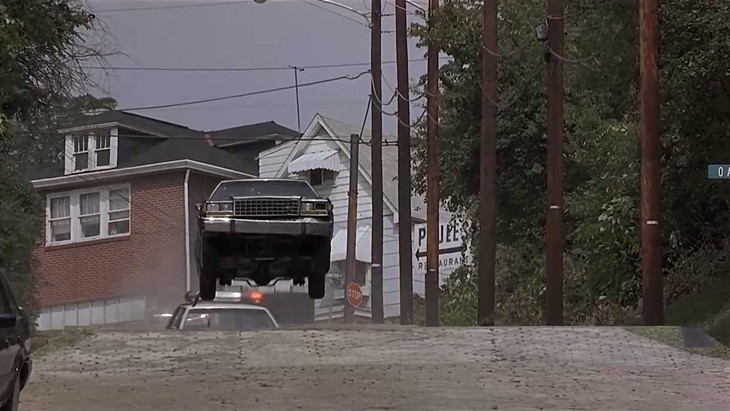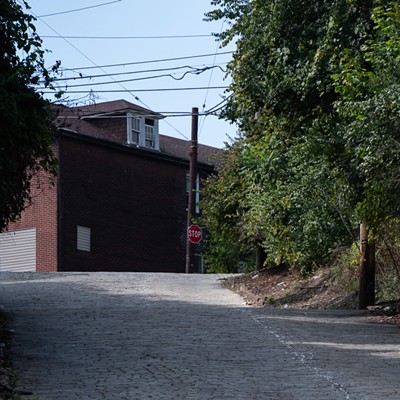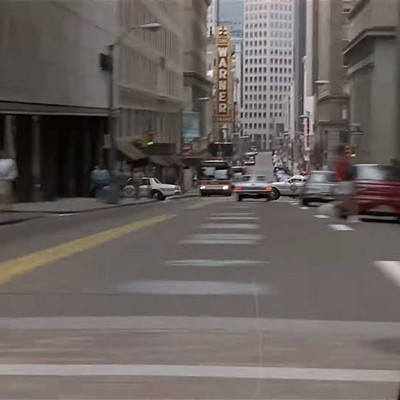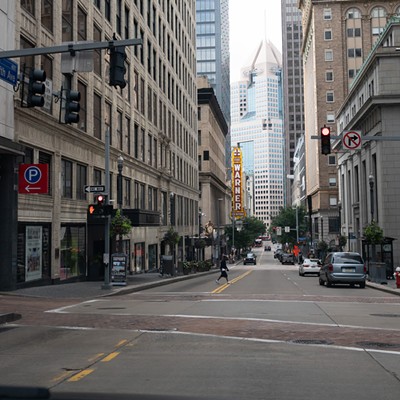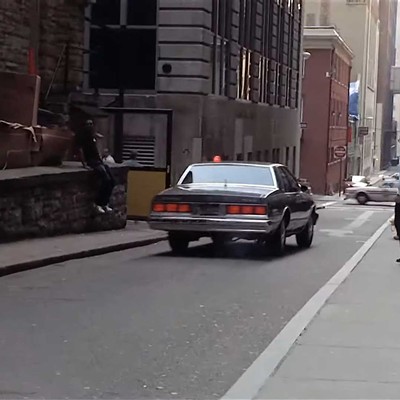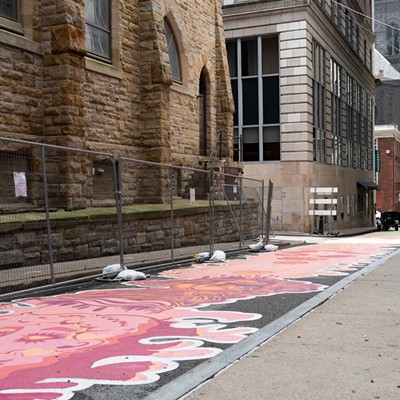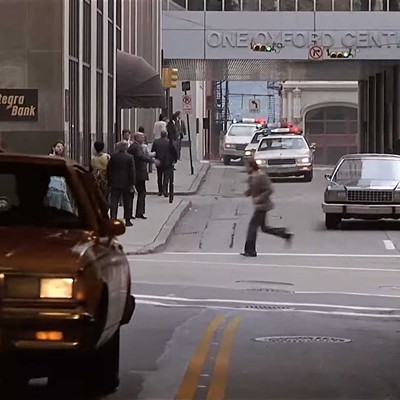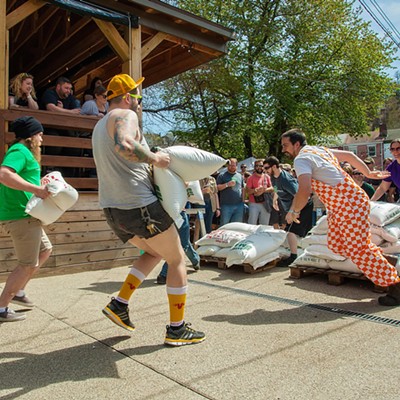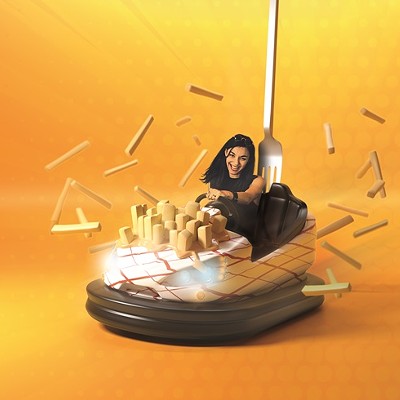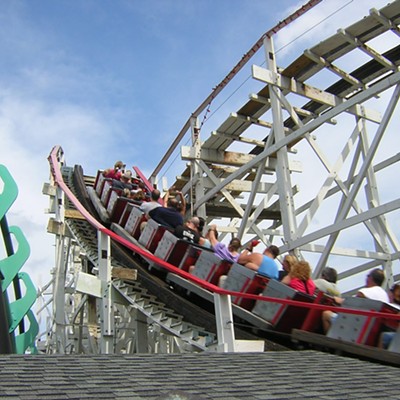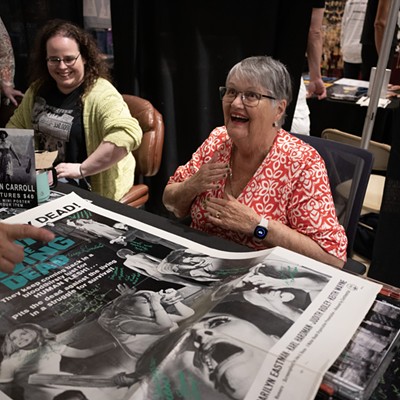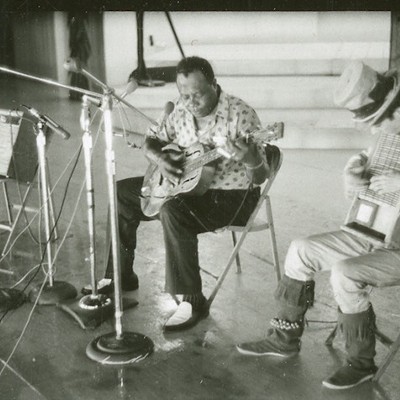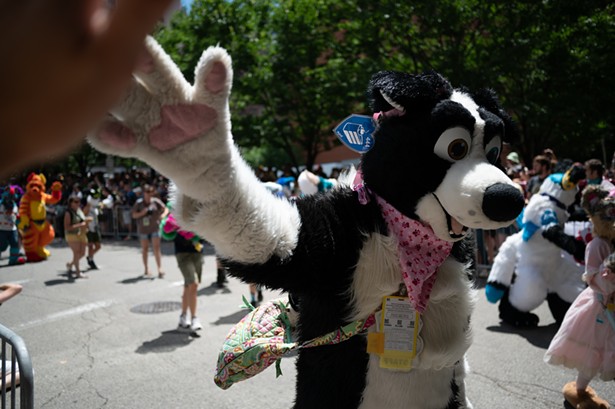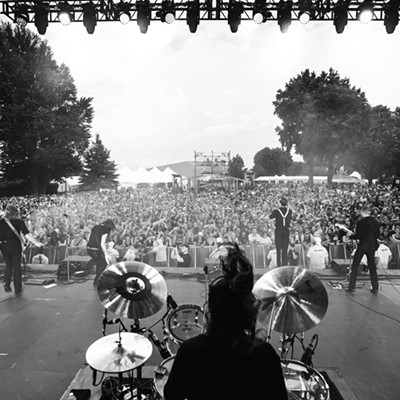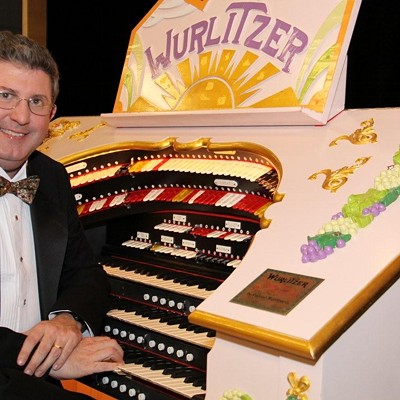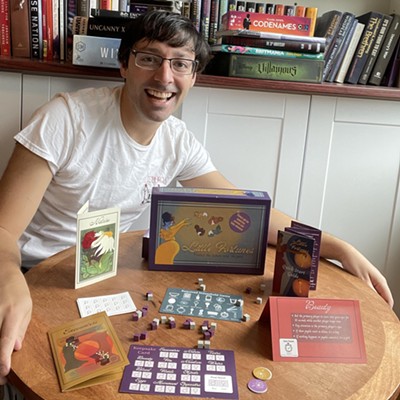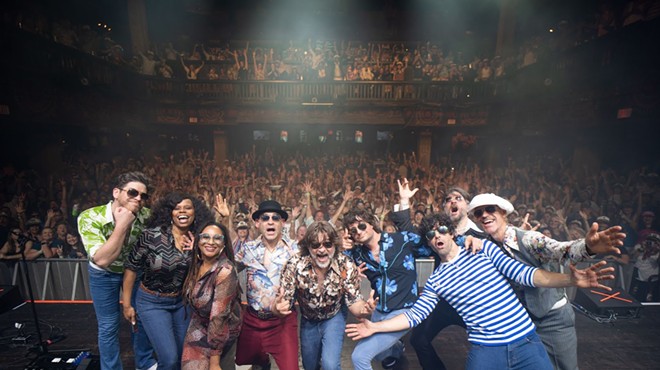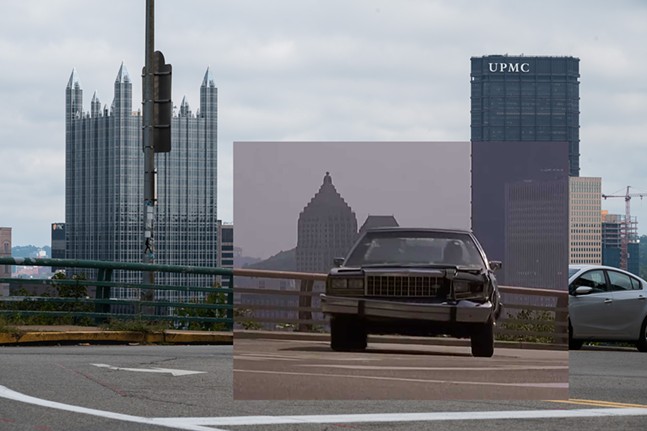
Even the film’s crew was a bit stunned at the time, Striking Distance location scout Steve Parys tells Pittsburgh City Paper.
“The cars were flying into the air and bouncing and light bars were flying off of them,” Parys recalls. “It was just nuts. It was berserk. To see these stunt guys go full out and the cars are throwing pieces off themselves. It was just this whackadoo excitement that every day was like, OK, what the hell are we doing now?”
Premiering Sept. 17, 1993, and starring a then up-and-coming Sarah Jessica Parker, Dennis Farina, Tom Sizemore, and Willis — whose fame was stratospheric after Die Hard — Striking Distance was slated to be, as Parys put it, “a big frickin' action movie.” In addition to the land-bound escapades, Willis’ character joins the River Rescue squad, stirring up fights on boats and barges, and action across Pittsburgh’s three rivers (the movie’s original title).
But script rewrites and reshoots delayed Striking Distance’s release, and it ultimately opened to lackluster reviews. Roger Ebert wrote at the time, “It’s a tired, defeated picture, in which no one seems to love what they’re doing, unless maybe it's a few of the character actors.”
Cop clichés aside, what the movie doubtlessly had going for it was the way it showcased Pittsburgh and made the city a part of the action — a goal of writer, director, and Pittsburgh native Rowdy Herrington — and one of the reasons it endures as a beloved local classic 30 years later.
Parys, a 33-year industry veteran whose first movie was Silence of the Lambs, recalls working closely with Herrington to realize his “Pittsburgh-centric project.” The crew scouted locations for four months before shooting.
“[We] were always looking for scope and drama and big, exciting locations,” Parys says. “It was always like … let’s get big vistas and big stretches where you can see [the city] in the distance.”
Pittsburghers themselves also embraced the production. A farmer let the crew take over his field for days to flip cars (the end of the opening chase sequence), even as heavy rains wreaked havoc and caused them to start sliding down a hill. Before filming a nighttime party scene at the Point, Parys and his team contacted every Downtown building and got them to agree to leave their lights on so that “the city looked really pretty and lit up.”
“Pittsburghers want to show off Pittsburgh,” he says.
The movie even roped in local news personalities to portray themselves, including a then relatively new WTAE weeknight news anchor, Sally Wiggin.
“My hair was huge and I looked ridiculous,” Wiggin recalls. “[But] I loved the movie … I think it was the first time, other than a horror flick, that someone [did] a film in which Pittsburgh was a character.”
Wiggin appears twice reading newscasts on characters’ televisions — first on Willis’, and then again when the movie’s murderer is revealed, and he knocks over his TV set in a fit of rage.
“I love the part where he kicks the TV … and there I go, I'm done. I thought that was my moment,” Wiggin said.
The cast and crew also took to the city — which doesn’t always happen, Parys says — with Bruce Willis, then-wife Demi Moore, and their daughters seen riding the Steel Phantom at Kennywood. Willis — who’d been performing as his pop singer alter ego Bruno Radolini — also made a habit of singing at Donzi’s in the Strip District. (The Boardwalk, the now long-closed, multilevel floating nightclub of which Donzi’s was a part, even resembles the houseboat where Willis’ character lives.)
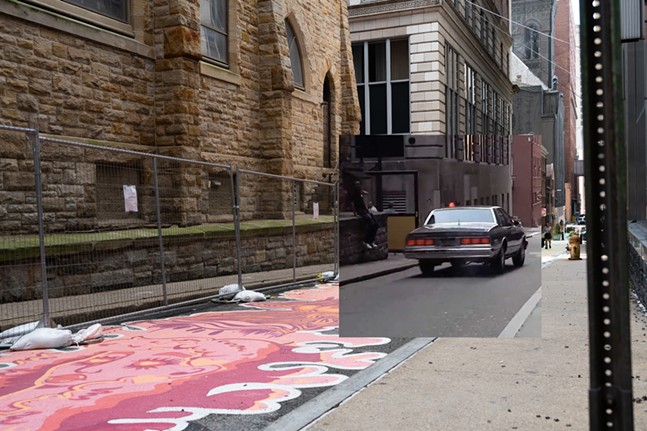
Parys also recalls that local bars — notably Chiodo’s, formerly in Homestead — opened their doors to production in the early morning hours after they’d worked through the night filming. The atmosphere on set was “convivial” and “it was really like an exciting adventure to go out and shoot this stuff,” he says.
Parys speculates that the continued appreciation of the movie also relates to its practical effects. He estimates that, now, about 80% of the action scenes would be computer-generated or shot with actors on green screen.
For a shoot-out on Second Avenue, the crew used dust hits for bullets and squibs to blow out glass on cars. Parys remembers a stunt double “went smashing through a fence and crushed a couple cars.” (The number of totaled cars seems to be a point of pride for the whole production; Herrington mentioned wrecking 40 of them when commenting on the movie’s anniversary to KDKA last month.)
In a later scene, Willis pursues the killer again and shoots a flare into his car. “We really did that!” Parys exclaims. “We did that with a real flare gun.”
The loss of practical effects also portended the end of the mid-budget thriller in general, so part of the nostalgia for Striking Distance could be for a bygone era of film.
“That kind of mid-level, character-based, plot-heavy action movie, it just doesn't exist anymore,” Parys said.
For those looking to get their Striking Distance fix, Parys recently spotted part of the set at the Rock Room in Polish Hill. Now an assistant director, he was shooting the second season of American Rust at the bar when he saw a roped off “Detillo’s Roost” sign, which originally hung above a cabin door in the movie.
“I was like, son of a bitch, that’s from Striking Distance!” Parys says. Apparently, the sign had changed hands several times: “[it’s] through some weird ‘his sister's brother's aunt worked on the movie.’”
Parys, also a Pittsburgher, says, for him, it spoke to the movie’s longevity, an unexpected delight.
When friends and family ask which movies he’s worked on, he’ll often “reel off” a long list and “their faces are blank and their eyes are dead, but then you say Striking Distance, and all of sudden they’re like, ‘Oh God, you worked on that?!’”
“You're in a bar, and you hear the guy next to you say, 'oh yeah, Bruce Willis was so cool in that movie.' Or you go into the Rock Room and there's a sign that makes you think back about it,” he says. “It’s just neat that it’s still in the public consciousness.”
